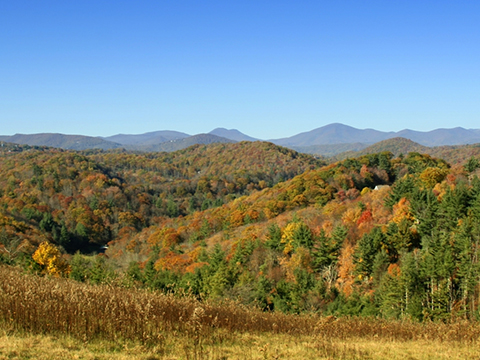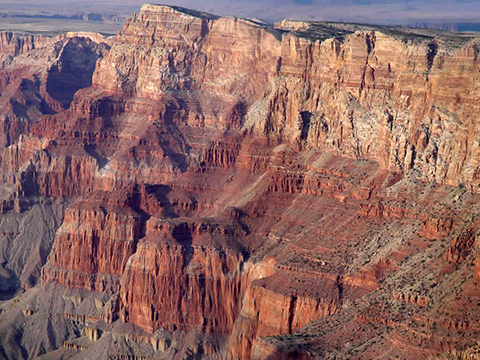Prelude
The Late Paleozoic Era witnessed many significant geologic events, not the least of which was the assembly of the latest supercontinent, Pangea. The Appalachian Mountains of the eastern U.S.A. are the result of the collision between Laurentia (ancestral North America), Eurasia, Africa, and South America. The Ancestral Rockies formed in the western U.S. during this time as well. Many diverse depositional environments existed across this huge landmass and its broad continental shelves, including stream flood plains and deltas, desert sand dunes, playas, sabkhas, shallow marine areas, etc. Much of this history is also preserved in the upper part of the Grand Canyon in Arizona.
|
Figure 11-1. A tale of two coasts of North America. Late Paleozoic folds form the scenic Appalachian Mountains in North Carolina (left). Remember to click on the highlighted images to see larger versions. |
|
What Will You Do Today?
|
Explore the geology of the Late Paleozoic Era, including the Mississippian, Pennsylvanian, and Permian Periods |
A. The Late Paleozoic Era - Review Late Paleozoic geologic time
B. Late Paleozoic Geology & Life Forms - Learn about the geology, tectonics, impact events, life forms, etc. of the Late Paleozoic Era
C. Appalachian Mountain & Grand Canyon Geology - Explore the Late Paleozoic geology of the Appalachian Mountains and Grand Canyon areas
D. Geology of the Cedar Ridge Area - Decipher the geologic history of the Cedar Ridge area of the Grand Canyon


